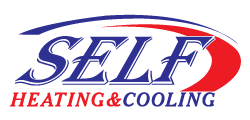Winter Humidification Tips
Negative Effects of Dry Air
- Increased likelihood of getting sick and developing or aggravating respiratory problems.
- Possibility of home damage to your wood furniture, walls, floors, and electronics.
- Contributes to higher utility costs because dry air feels colder, prompting you to turn up the heat, which makes the air even drier.
- Increased likelihood of bloody noses, static shocks, sore throats, allergies, asthma, and dry/itchy eyes, throat, and skin.
It’s the dry air that causes many of the health problems attributed to the cold weather during cold and flu season. This is why it is important to be mindful of the humidity levels in your home. Keeping the humidity at a healthy, comfortable level will help curb many of these symptoms.
What exactly is considered “healthy and comfortable?”
The Environmental Protection Agency recommends an indoor humidity level between 30 – 60%. But keeping these levels throughout the season requires a bit of juggling. The outside air naturally affects the humidity in your home whenever doors or windows are opened.
A typical forced-air heating system will also contribute to the low humidity by replacing the interior air with drier outdoor air. But humidity in the home when the outdoor temperature is freezing or below can lead to water and ice buildup on windows and, even worse, mold along the walls.
So, it’s important to find the ideal levels that won’t harm you or your home. A good rule to follow is that the lower the outside temperature, the lower your humidity should be. Most modern HVAC thermostats allow you to set the humidity level in your home, but a hygrometer (which can be found at any home improvement store) will also give an accurate measurement.
In order to get the best all-around results, indoor humidity levels should be adjusted according to the outside temperature. Here is a short tip-sheet for a home set at a comfortable 70 degrees:
- Outside temperature 20-40 degrees: Indoor humidity level should not exceed 40%.
- Outside temperature 10-20 degrees: Indoor humidity level should not exceed 30%. (Be mindful that a level under 30% can cause discomfort and the usual dryness symptoms. This is when a humidifier can come in handy.)
- Outside temperature 0-10 degrees: Indoor humidity level should remain at 30% or slightly lower.
- Outside temperature between -10 and 0 degrees: Indoor humidity level should not exceed 25%.
- If you are unfortunate enough to live in an area where the outside temperature drops to 10-to-20 below, the humidity indoors must not exceed 20%. In this instance, a humidifier is essential in keeping you both comfortable and healthy.
Humidification Tips for Dry Winter Air
- Air dry your clothes to introduce humidity and save on energy costs.
- Open the door to your bathroom when showering or bathing.
- Houseplants help improve indoor air quality and release moisture into the air through transpiration.
- Fish tanks, indoor fountains, and standing water all add moisture to the air through evaporation.
- Opt for more stovetop cooking to introduce needed moisture.
- Your heating system contributes to dry indoor air, so lower the thermostat when you can. You’ll save on utility bills as well.
- Seal and insulate your home to keep the cold, dry winter air out.
If you begin to see condensation on your windows, your humidity level is probably too high. Measure your home’s humidity levels with a hygrometer.
In addition to personal wellbeing, when the humidity levels are within the EPA’s recommended range, a home can heat much more efficiently. These levels allow for a lower thermostat setting, which will keep your HVAC system running less and lower your utility bill. This season, be mindful of the humidity levels in your home and enjoy a happier, healthier winter.
Whole-Home Humidification
Whole-home humidification is a great solution for maintaining healthy humidity levels. It is installed directly into your home’s central air unit and works for the entire house, rather than just a single room as with portable humidifiers.
An absorbent pad/perforated panel is installed directly into your system’s airflow to introduce much needed moisture into the air. Since it gets water from your main water line, there is no need to refill or drain it. Also, there is no need to turn it on or off since it uses a built-in humidity reader to determine when to humidify or dehumidify your home.
Call Self Heating & Cooling for your professional humidification and indoor air quality assessment and consultation.










